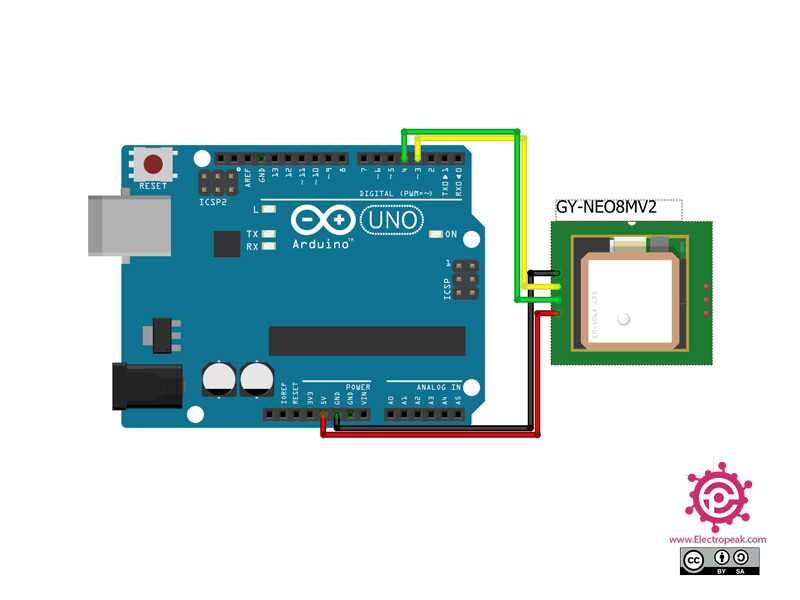
- #NEO M8N 0 01 ARDUINO I2C EXAMPLE MAC OS#
- #NEO M8N 0 01 ARDUINO I2C EXAMPLE INSTALL#
- #NEO M8N 0 01 ARDUINO I2C EXAMPLE CODE#
It expects the device to be configured to output only that message.

#NEO M8N 0 01 ARDUINO I2C EXAMPLE CODE#
The YouTube video referenced above links to some very simple code for parsing one UBX message. It outputs NMEA by default, which can be parsed by TinyGPS. The ublox NEO-M8 can output NMEA, UBX and RTCM messages (spec here). Few parser libraries can also support the binary format of specific GPS brands. But because the NMEA format is fairly inefficient, many GPS manufacturers also support a binary format that is unique to their devices (i.e., not "standard"). You're asking about an NMEA parser - almost all GPS devices output NMEA "sentences", which can be parsed by many different NMEA parser libraries. You can use the following sketch to find your devices’ I2C address.Does anyone have a NMEA parser for this GPS?Īs others have said, TinyGPS will work with this device. However, if it is difficult to find out, you may need to run an I2C scanner sketch to find out the I2C address. The I2C address can be usually found on the component’s datasheet. With I2C communication, each slave on the bus has its own address, a hexadecimal number that allows the ESP32 to communicate with each device. Recommended reading: ESP32 GPIO Reference Guide Scan I2C Address with ESP32 When using the ESP32 with Arduino IDE, the default I2C pins are GPIO 22 (SCL) and GPIO 21 (SDA) but you can configure your code to use any other pins.

So, usually, when you’re dealing with this type of electronics components you don’t need to worry about this.Ĭonnecting an I2C device to an ESP32 is normally as simple as connecting GND to GND, SDA to SDA, SCL to SCL and a positive power supply to a peripheral, usually 3.3V (but it depends on the module you’re using). Most sensors we use in our projects are breakout boards that already have the resistors built-in. Typical values are 4.7k Ohm for 5V devices and 2.4k Ohm for 3.3V devices. The SDA and SCL lines are active low, so they should be pulled up with resistors. Note: in many breakout boards, the SDA line may also be labeled as SDI and the SCL line as SCK. One is used for the clock signal ( SCL) and the other is used to send and receive data ( SDA). I2C communication protocol uses two wires to share information. Users can program command registers to control I☬ interfaces, so that they have more flexibility
#NEO M8N 0 01 ARDUINO I2C EXAMPLE MAC OS#

#NEO M8N 0 01 ARDUINO I2C EXAMPLE INSTALL#
Follow the next tutorial to install the ESP32 on the Arduino IDE, if you haven’t already. We’ll program the ESP32 using Arduino IDE, so before proceeding with this tutorial you should have the ESP32 add-on installed in your Arduino IDE.

In this tutorial, we’ll cover the following concepts:


 0 kommentar(er)
0 kommentar(er)
